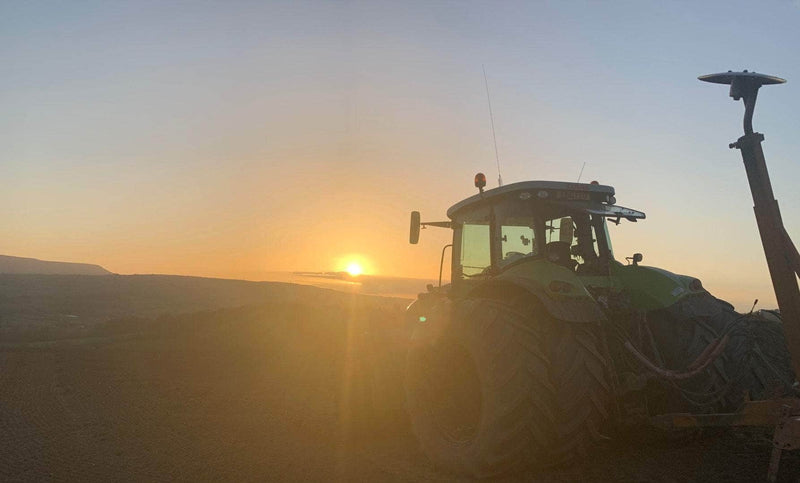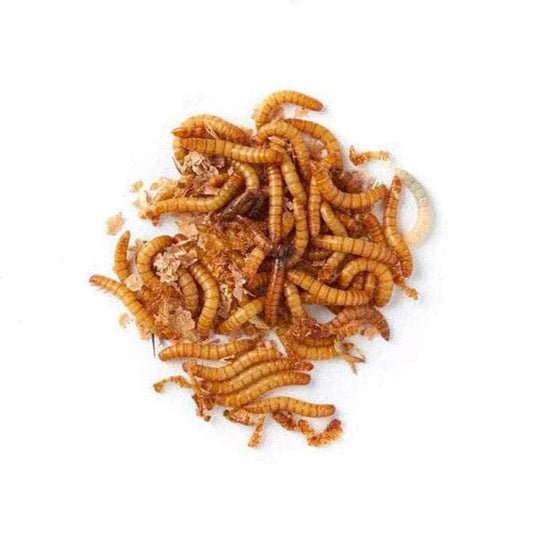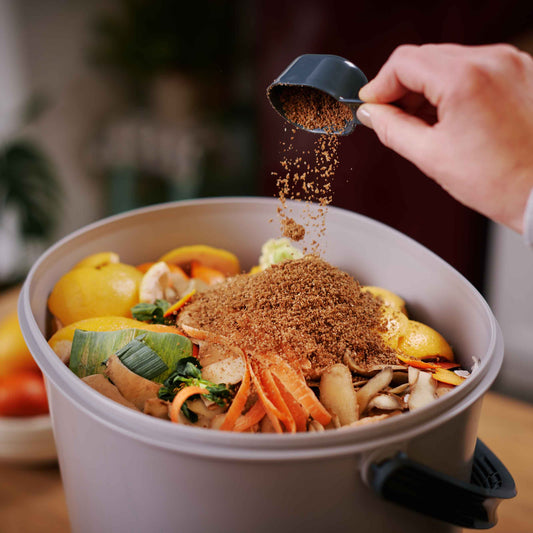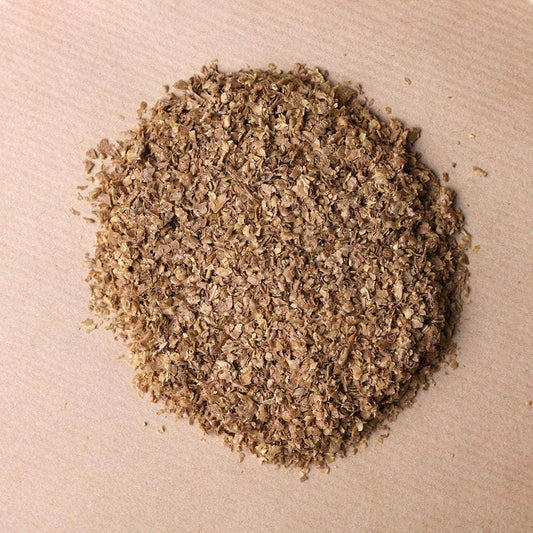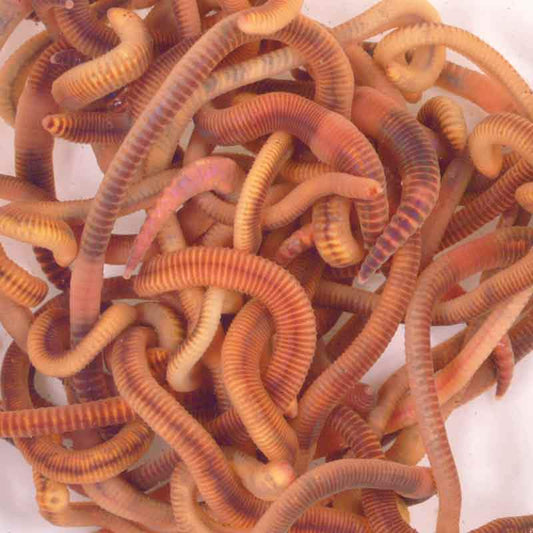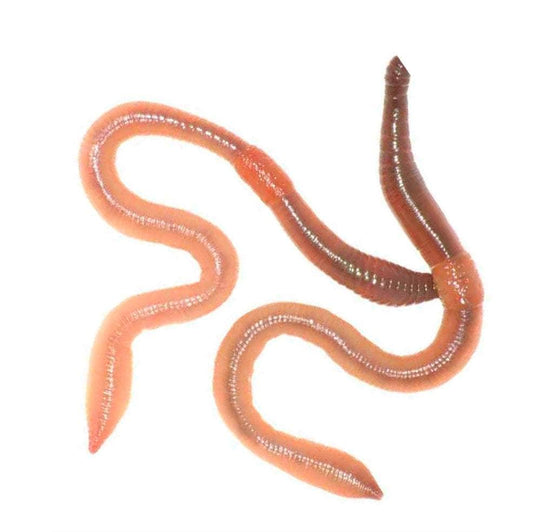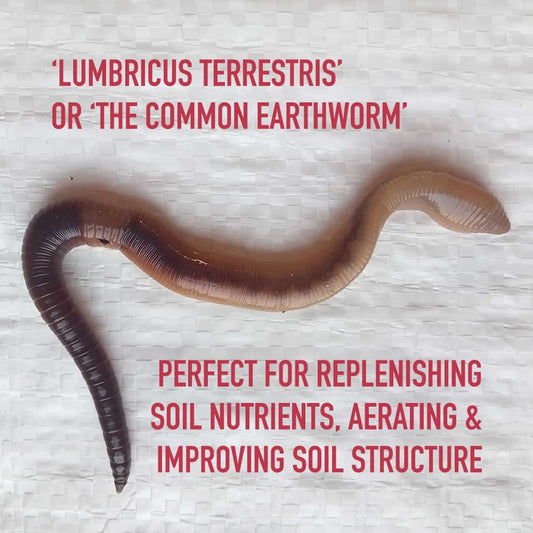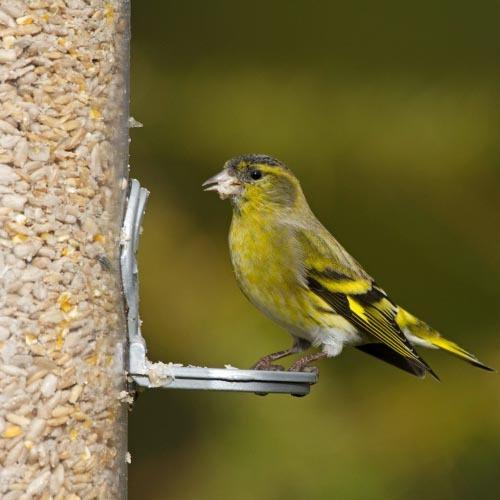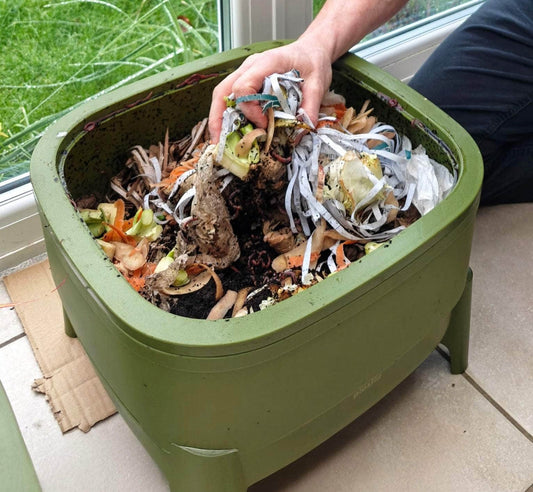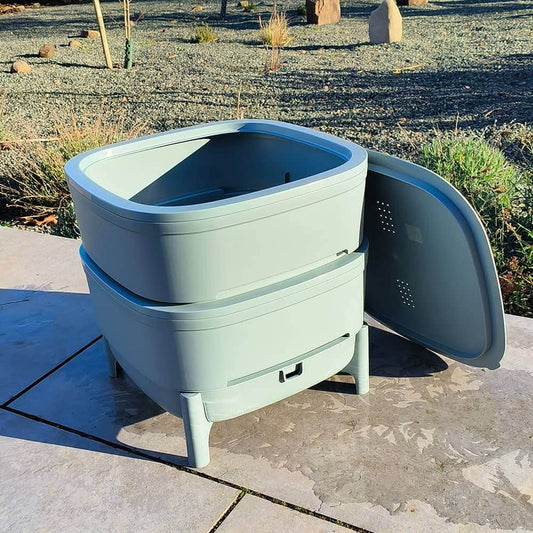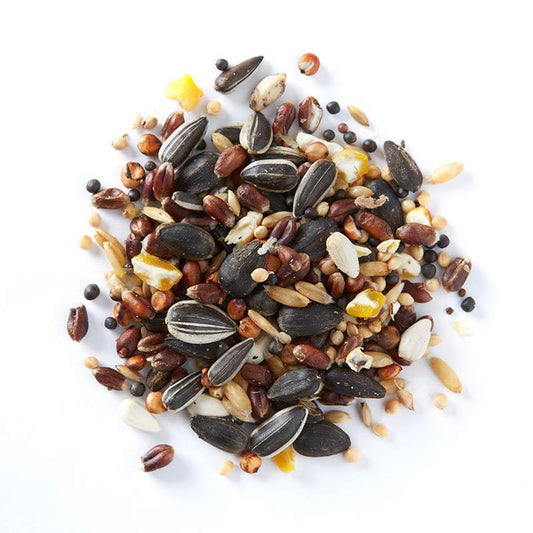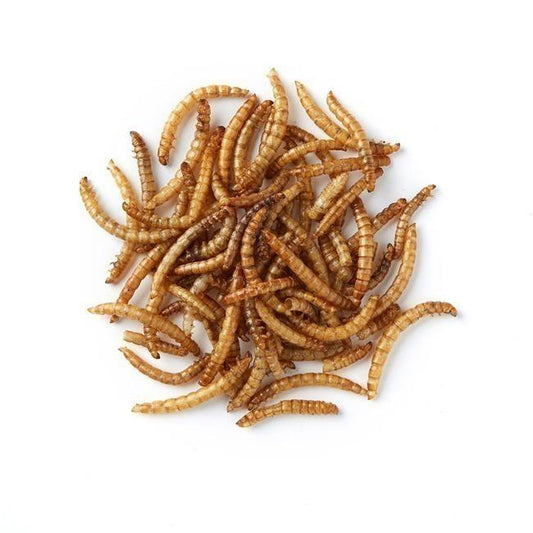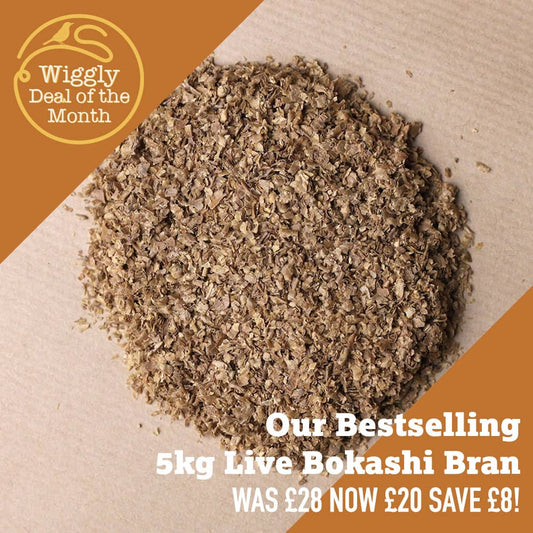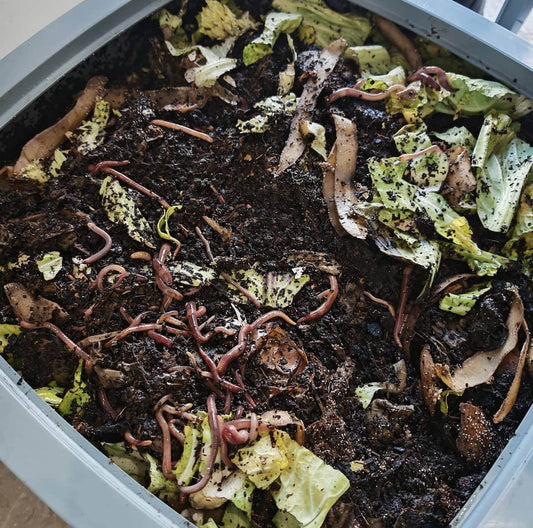What’s in the Kit
Your Bokashi Organko Essential Kit includes everything you need to get started straight away:
– Two airtight 16-litre Bokashi Organko bins (with carry handles and sturdy locking lids).
– Built-in tap for draining “Bokashi tea”.
– Tamper to press down the waste.
– Easy-fit grid and drain plate to separate liquid from solid waste.
– Complete instruction booklet with Wiggly farm-tested tips.
– Your choice of LIVE Bokashi Bran (1 kg, 2 kg or 5 kg) — made on our Herefordshire farm.
Everything arrives ready to use — simply place a bucket in your kitchen, utility room, porch or garage, sprinkle bran on your waste, and let the microbes do the rest.
Why Every Household Needs Bokashi
Every bit of food waste matters. When food ends up in landfill, it doesn’t just rot — it releases methane, a greenhouse gas more than 80 times more potent than CO₂.
Using Bokashi stops that process in its tracks. You’re capturing nutrients and carbon instead of letting them escape.
Bokashi fermentation converts waste into a stable, nutrient-dense material that feeds soil biology and restores life underground. It’s one of the easiest and most powerful actions a household can take:
-
Cuts climate emissions without needing a compost heap or garden.
-
Rebuilds soil health with every handful of fermented waste.
-
Replaces peat and synthetic fertilisers with nutrient-rich compost.
-
Closes the loop between what we eat and what we grow.
If you eat, you need Bokashi.
How Bokashi Works (and Why It’s Different)
Bokashi composting is a natural fermentation process — similar to making kimchi, cider, or sauerkraut. Instead of rotting with oxygen, your food waste ferments cleanly and quickly without smell or flies.
When you open the lid or harvest the bin, you’ll notice a pleasant, cidery or vinegary aroma — that’s the sign of healthy fermentation. It’s not rotting; it’s food waste that’s been pickled by beneficial microbes.
Inside, your food will look almost unchanged, but after 10–14 days it has fully fermented. This is known as pre-compost — the waste has been biochemically transformed into a stable, microbe-rich material ready to complete its breakdown once added to soil or compost.
Here’s what happens next:
– When mixed into soil, it breaks down in just 2-5 weeks, feeding soil organisms and improving structure.
– It releases nutrients gradually, acting as a slow-release natural fertiliser.
– It inoculates your soil or compost heap with billions of beneficial microbes that continue the decomposition process naturally.

















